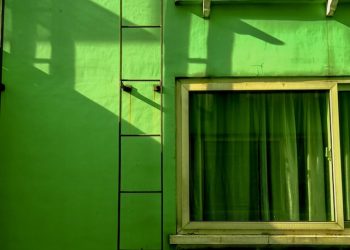Green homes and eco-friendly building has become one of the hot subjects of the day, and has been for quite a while. Builders are running advertisements about how green their new homes are. Realtors are taking seminars to get green credentials to add to their name with all their other initials. Appliances are advertising eco-friendly features. Even concrete driveways can be certified as green, provided they meet certain specifications, including allowing water to flow through and drain evenly beneath the driveway. And of course, we are seeing more organizations spring up which create checklists and issue green certificates. Green is good, but how effective is green and how much are you willing to pay for an eco-friendly home?
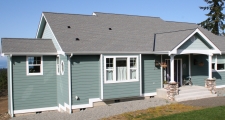 While I may challenge some conventional thinking here, don’t conclude that I am unfriendly to the eco-friendly movement, because you would be wrong. I am very much in love with our environment. I grew up in Alaska and grew to love the beauty of nature. I spent countless hours as a boy and young man running in the woods, climbing mountains in the great Alaska Range, and boating the Tanana River as well as many other rivers. Now I love hiking and jogging through the Olympic National forests, walking La Push beach, and spending time outdoors.
While I may challenge some conventional thinking here, don’t conclude that I am unfriendly to the eco-friendly movement, because you would be wrong. I am very much in love with our environment. I grew up in Alaska and grew to love the beauty of nature. I spent countless hours as a boy and young man running in the woods, climbing mountains in the great Alaska Range, and boating the Tanana River as well as many other rivers. Now I love hiking and jogging through the Olympic National forests, walking La Push beach, and spending time outdoors.
The reason I raise these questions above is because I think it is wise to carefully consider major movements that seem to be so important, but which also cost a lot of money to implement. But perhaps the bigger reason to consider the importance of the green movement is because it has also become part of and intermixed with a national fad. Salesmen and large marketing associations will gladly jump on the bandwagon of anything that helps them make money, and clearly the eco-friendly movement is a grand opportunity to sell consumers on more expensive products and services on a very large scale. So it is wise in my opinion to be cognizant of the need to separate reality from fantasy.
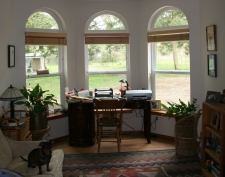 The other important area where discernment is necessary is where to spend your hard earned money. The greener you want your home, the more it will cost, which makes sense, but there are some green building features that must be balanced in a cost to benefit ratio. In other words, is it worth $50 to add a green feature? Most buyers would probably say yes. But is it worth $25,000 to add a green feature that you can live without and which has a negligible effect to reduce any adverse impact on the environment? Maybe not.
The other important area where discernment is necessary is where to spend your hard earned money. The greener you want your home, the more it will cost, which makes sense, but there are some green building features that must be balanced in a cost to benefit ratio. In other words, is it worth $50 to add a green feature? Most buyers would probably say yes. But is it worth $25,000 to add a green feature that you can live without and which has a negligible effect to reduce any adverse impact on the environment? Maybe not.
What makes a home green? The question is answered in an excellent article, “Making Green by Going Green,” published by the Washington Association of Realtors in RE Magazine (March/April 2010 issue).
While the term green or eco-friendly is bandied about in just about every corner of today’s consumer world, stamped on everything from soaps and luggage all the way up to sky risers and whole cities, green homes typically focus on several key goals:
1. Save energy
2. Conserve water
3. Contribute to a safe and healthy indoor environment
4. Protect natural resources now and into the future
I interviewed an experienced custom home builder recently, and I asked him specifically about these major goals. All of his custom homes are built with the highest standards, including a focus he has had for 30 years on paying close attention to these four major goals.
He has always installed heating and circulations systems, as well as appliances, that save energy, and technology has improved over the years to constantly increase the energy saving capacities. This builder does this regardless of the emphasis on green building. In fact, he was doing this long before green became popular.
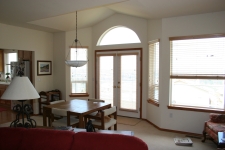 In addition, conserving water, contributing to a safe and healthy environment and protecting natural resources has always been an important aspect of designing and building homes for this custom home builder. And I should point out that this builder has never relied on an outside third-party organization to certify his homes as green. He has been doing what is right for 30 years.
In addition, conserving water, contributing to a safe and healthy environment and protecting natural resources has always been an important aspect of designing and building homes for this custom home builder. And I should point out that this builder has never relied on an outside third-party organization to certify his homes as green. He has been doing what is right for 30 years.
Now, some builders have taken seminars and are building homes that score high on their certifying organization’s checklist. A green home can be very green, which means that you can take green just about as far as you want to, and the corollary to that is that you can spend as much as you want on being green.
One of the issues that I would challenge anyone to carefully consider as they design and plan their green home is to pay attention to the cost/benefit ratio of expensive green features. If you have a design that gets you 98% of the way to your goal for a particular feature, how much more are you willing to spend to reach 99% of your goal? Is that additional and negligible 1% worth thousands of dollars? I believe that an excellent and experienced custom home builder will build what is largely defined as a green home today based on the above four goals simply because the technologies that are used in today’s modern custom built home are largely green.
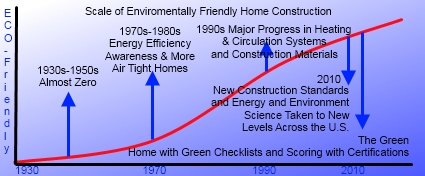
And lastly, consider one more issue when you are designing your green home. In the Sequim and Port Angeles areas, super green homes that have tried to reach the ultimate greeness in every aspect of the design and construction of the home, have simply not been in demand by buyers. One can argue all they want to about how important green is, how sacred our environment is and what we should or could be doing to protect it for future generations, but the reality is that the vast majority of consumers do not want to spend the extra $50,000 to $100,000 it would take to build the ultimate green home. And will the ultimate green home really make the earth that much cleaner? All the scientific evidence is not in on the long-term impact of some green features.
The other practical consideration for any homeowner who is not wealthy is resale. Will a home that cost much more to build garner a premium when it sells. Not in Sequim or Port Angeles. At least not up to now.
Last Updated on July 27, 2012 by Chuck Marunde

